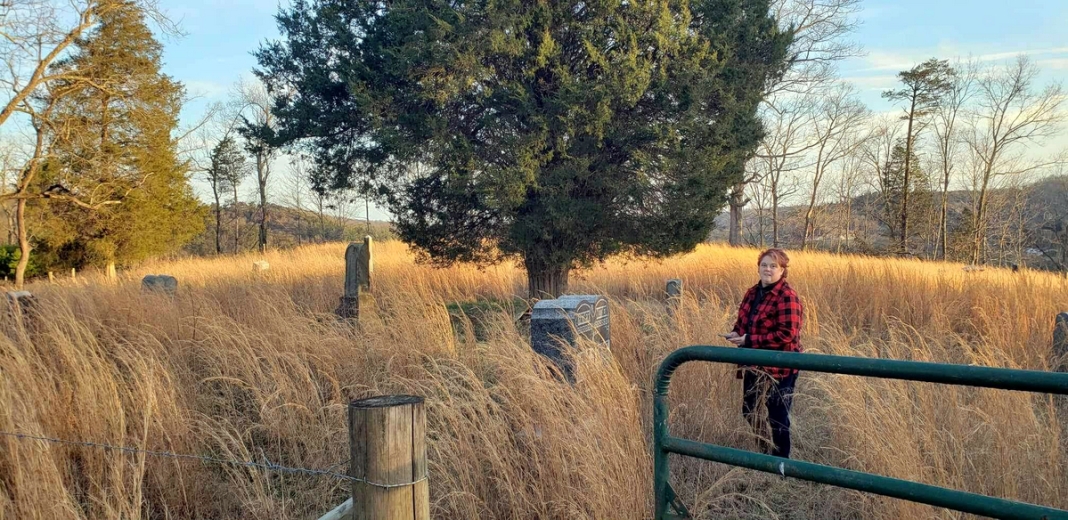DROOP, W.Va. — Among the smallest state parks in West Virginia, 110-acre Beartown State Park is nevertheless among its most fascinating. For decades, it's inspired visitors as a natural wonder—a densely shaded landscape of ferns and mossy rocks.
On the summit of Droop Mountain—very near Droop Mountain Battlefield State Park—a thick sandstone has weathered into a "town" of house-sized boulders over millions of years. Imaginative visitors can envision it hosting a town of bears, though bears aren't known to live among the visited areas of the park.
How has the "bear town" come to be? Ken Ashton, a geologist with the West Virginia Geological and Economic Survey at Morgantown, says the rock formation is a classroom for the study of differential weathering—a kind of erosion determined by factors such as the composition of the rock.
The sandstone at Beartown, known by geologists as the Droop Sandstone, was deposited during the Paleozoic Era some 300 million years ago, with cracks or fractures forming in the bedrock.
Typically, those fractures in the sandstone followed a pre-determined pattern, which gives its boulders their roughly cubic shapes, Ashton says.
“Those cracks have been forming for a long time,” he says. “There are certain fracture trends that they follow.” Those fractures served as conduits that allowed water to get into the rock, which affected their shape even more.
“It’s a little easier for water to find its way in through a fracture than solid rock,” Ashton says. “So, over time, as the Appalachians are eroded, more water is getting into those cracks, and as the water gets in, it erodes the rock.”
The freeze-thaw cycle also contributed to the formation of the rocks. When water freezes, it expands, and it contracts when it thaws.
“When water gets trapped, it will expand and contract over time, and it makes that crack bigger, and that allows a little bit more water to get in there, which increases the process,” Ashton says.
Over millions of years, cracks have expanded into wide passages and crevices. The boulders at Beartown are the remnants of what used to be a single layer of sandstone, as everything else has eroded along the weaknesses in the bedrock.
As the rock began fracturing, the Appalachian Mountains were uplifted, though Ashton says it is difficult to pinpoint precisely when the mountains were formed.
“Ever since the end of the Paleozoic period, the Appalachians have been eroding,” he says. “We’re ballparking it: it was a long process over time.”
Another similar rock formation in West Virginia is Rock City at Cooper’s Rock State Forest, near Bruceton Mills, West Virginia. Its boulders also formed as a result of the differential weathering.

“Bedrock weathers at different rates at different zones, so it leaves a bunch of weird rocks lying around, and you’re wondering: how did that get here?”
Additionally, the balanced rock formation at Blackwater Falls State Park in Tucker County is one house-sized boulder sitting on top of another, which occurred because one rock weathered away faster than the other.
“So it looks like there’s this big balancing rock up there, but again, it’s just the differential weathering rates of that particular sandstone bed,” Ashton says.
The land was purchased in 1970 with funds from the Nature Conservancy and a donation from Mrs. Edwin G. Polan in memory of her son, Ronald Keith Neal, a local soldier killed in the Vietnam War.
Its development has been minimized to preserve the environment, though trails and boardwalks have been opened in part of the preserve. Markers explain the natural processes at work in the area.
The park is located off US-219, seven miles southwest of Hillsboro, West Virginia, near Droop Mountain Battlefield State Park and Watoga State Park.
The park is open daily from April to October. Access during the off-season is available by appointment. No admission fee is charged. For more information on touring the area, visit the Pocahontas County Convention and Visitors Bureau.
Sign up to receive of FREE copy of West Virginia Explorer Magazine in your email weekly. Sign me up!





